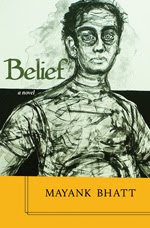Sunday, April 29, 2012
Canadian culture
Recently, I attended a splendid
lunch and learn discussion organised by Diaspora Dialogues where a writer
(Joyce Wayne) and a literary agent (Dean Cooke) gave great insights
into the process of writing fiction, and getting published.
I was there to understand the
process because I, too, hope to get my novel published some day.
And I wondered
whether I would be a Canadian writer or an Indian when (if) my novel is published?
I don’t know; both, I guess.
How much of a Canadian can an
immigrant become, especially a first-generation immigrant. Then, what is it to
be a Canadian? And, what is Canadian culture.
There are many interesting
theories to these questions.
As a student of journalism at
the Sheridan College in (2009), I was introduced to Canadian literature in
English, and read Northrop Frye’s “garrison mentality” definition of Canadian
culture.
“...I have long been impressed in
Canadian poetry by a tone of deep terror in regard to nature, a theme to which
we shall return. It is not a terror of the danger or discomforts or even the
mysteries of nature, but a terror of the soul at something that these things
manifest. The human mind has nothing but human and moral values to cling to if
it is to preserve its integrity or even its sanity, yet the vast
unconsciousness of nature in front of it seems an unanswerable denial of those
values. [...]
“If we put together a few of these
impressions, we may get some approach to characterising the way in which the
Canadian imagination has developed in its literature. Small and isolated communities
surrounded with a physical or psychological “frontier” separated from one
another and from their American and British sources; communities that provide
all that their members have in the way of distinctively human values, and that
are compelled to feel a great respect for the law and order that holds them
together, yet confronted with a huge unthinking, menacing, and formidable
physical setting – such communities are bound to develop what we may
provisionally call a garrison mentality. In the earliest maps of the country
the only inhabited centres are forts, and that remains true of the cultural
maps for a much later time. [...]
(Conclusion to Carl F. Klinck’s anthology Literary History of Canada –
1965)
Of course, for John RalstonSaul this is a manifestation of the “colonial mind”.
In
A Fair Country, he argues:
“Even the way we represent our
literature tells us something about the colonial mindset. Roy MacGregor laid
this out with perfect intellectual clarity in Canadians. Why is John Richardson’s less than mediocre
nineteenth-century novel Wacousta so
relentlessly pushed forward as the founding statement of our sensibility? What
is its message? That the nature and climate of Canada makes it a place to be
feared. That the First Nations are violent and to be feared. That settlers must
dominate in every way in order to assuage their fears. This deeply European
view – steeped in the discomfort of the outsider – helped to set the pattern
for a colonial interpretation of Canada. Ours was to be a place in which white
Christians must be constantly ill at ease, uncomfortable, living far from their
true civilizational inspirations. At the same, they must also imagine
themselves as cut off from the gigantic, uncontrolled nature all around them.
They must struggle to survive, dependent on the originality of those fortunate
enough to live at the centre of great civilizations. They must marginalize,
weaken, if possible destroy, the local Indian
civilization. Christianity, in its various forms, would be a safe, rigid
structure to protect these Europeans from this uncontrollable, frightening
place. Theirs was to be what Northrop Frye called a garrison mentality – a “closely
knit and beleaguered society” existing with a “deep terror in regard to nature.”
Some questions don’t have easy
answers, and some answers lead to more questions.
Subscribe to:
Post Comments (Atom)





nice!!
ReplyDelete